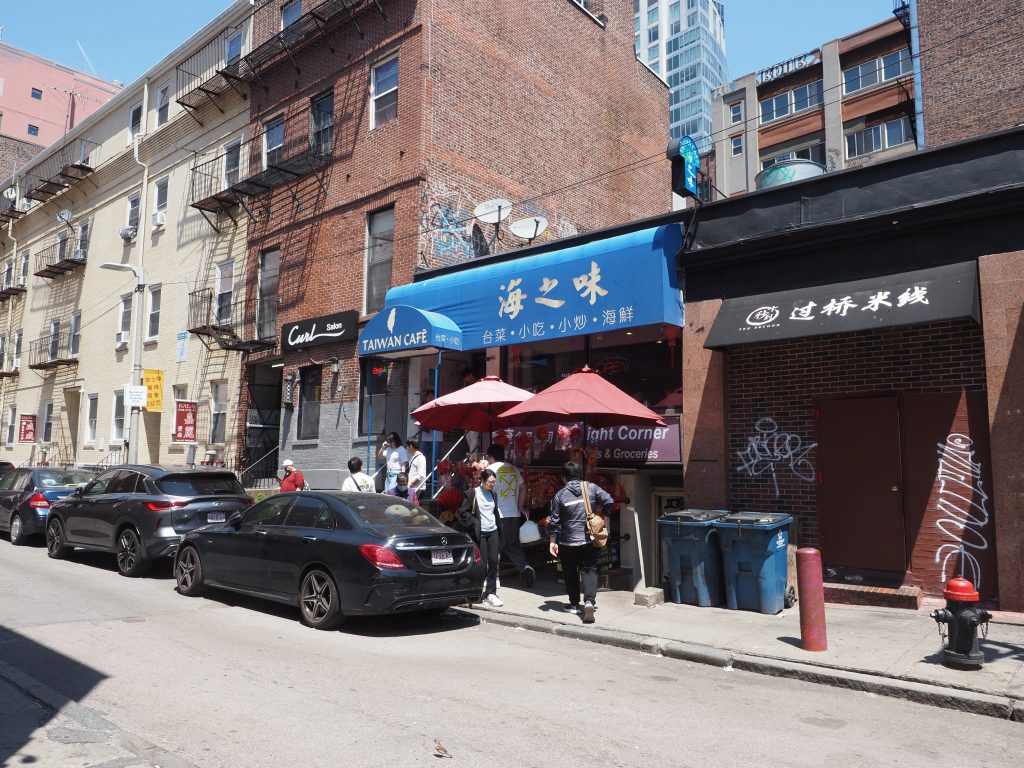We started the day a bit more slowly, but after a bite for breakfast, we did go for a little stroll around the beautiful Beacon Hill neighborhood, stopped for some food items at a nearby grocery store, and dutifully walked around the Massachusetts State House with its golden dome. We spent a little more time catching up on our mail and our journals, and then it was time to meet my friend Louise, with whom I was a grad student at Rice, and who has lived in Boston for the last 20 years. She was eager to show us her Boston and spent the whole day with us. It was lovely to spend time with her!
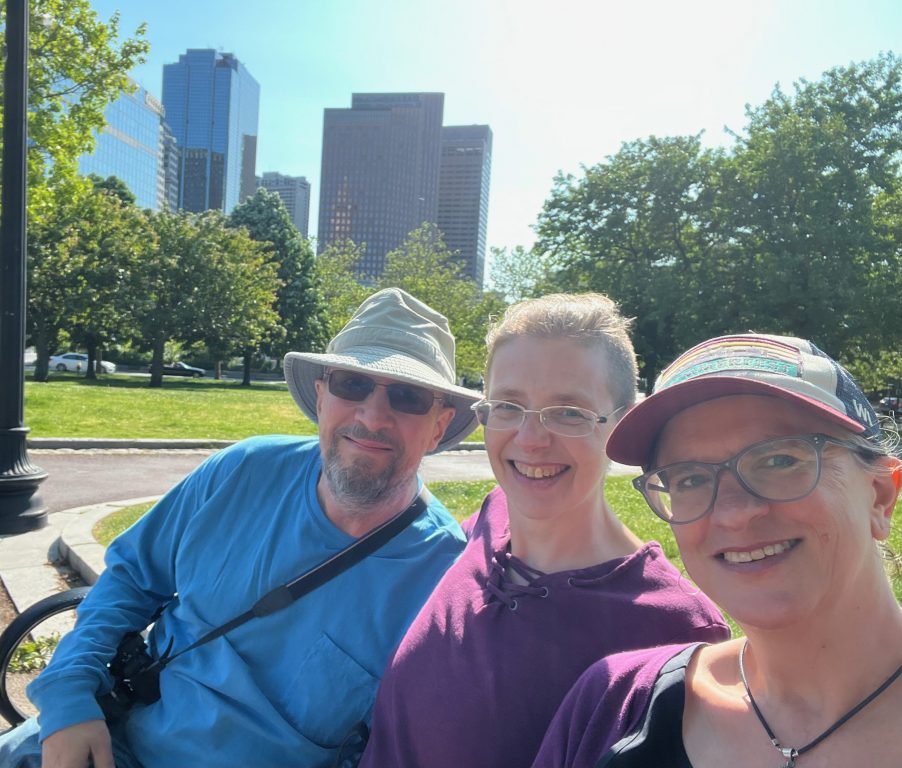
Louise met us a little after 11 by the State House and we walked through the parks into the theater district, and along busy Boylston Street, where she had suggested the Parish Cafe, a sandwich place that features sandwiches from various famous chefs, for lunch (I am not enough of a foodie to know their names). I had a lovely turkey wrap with cranberry sauce, and Mark and Louise both had focaccia sandwiches with pork loin. It was a lovely location and a great way to catch up. Louise and I last saw each other in 2012, and she had never met Mark!
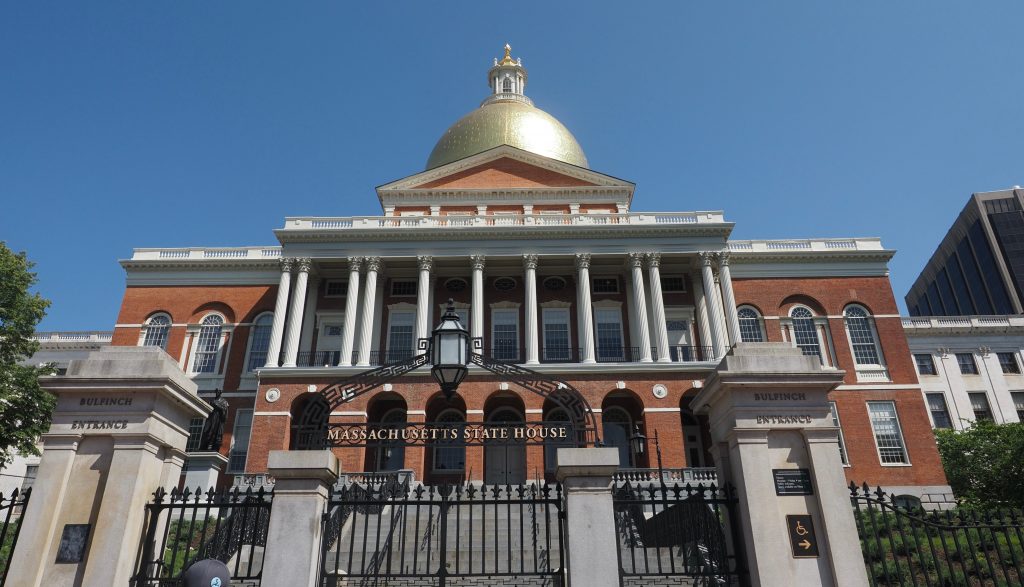
We then started on a walking tour that took us across downtown and through parts of Chinatown, through its gate, and then along a park corridor called the Rose Kennedy Greenway near the harbor. There were various indoor and outdoor markets, street vendors and street performers, and lots of tourists milling around–all fun to take in as we made our way further north, by the oldest bar in Boston (1795) and into the North End neighborhood, where little Italian shops and historic buildings are nestled closely together. This is where the famous Old North Church (built 1723) is, where Paul Revere ended his ride to tell John Pulling Jr. to hang up the “One if by land, two if by sea” lantern. There was also a building set up as a print shop to demonstrate letterpress printing, and the guide pulled out a Boston Gazette from 1760 with a raised metal print block that he said was made by Revere (normally a silversmith by trade, so I am not sure on what authority). My main concern was that the paper was handled without gloves! From there, we made our way into the nearby Copps Hill Burying Ground, where some of the Revolutionary War people are buried. Here and elsewhere, the old cemeteries lots of thin slab-style gravestones that are very different from what we see at home in cemeteries from the late 19th centuries.
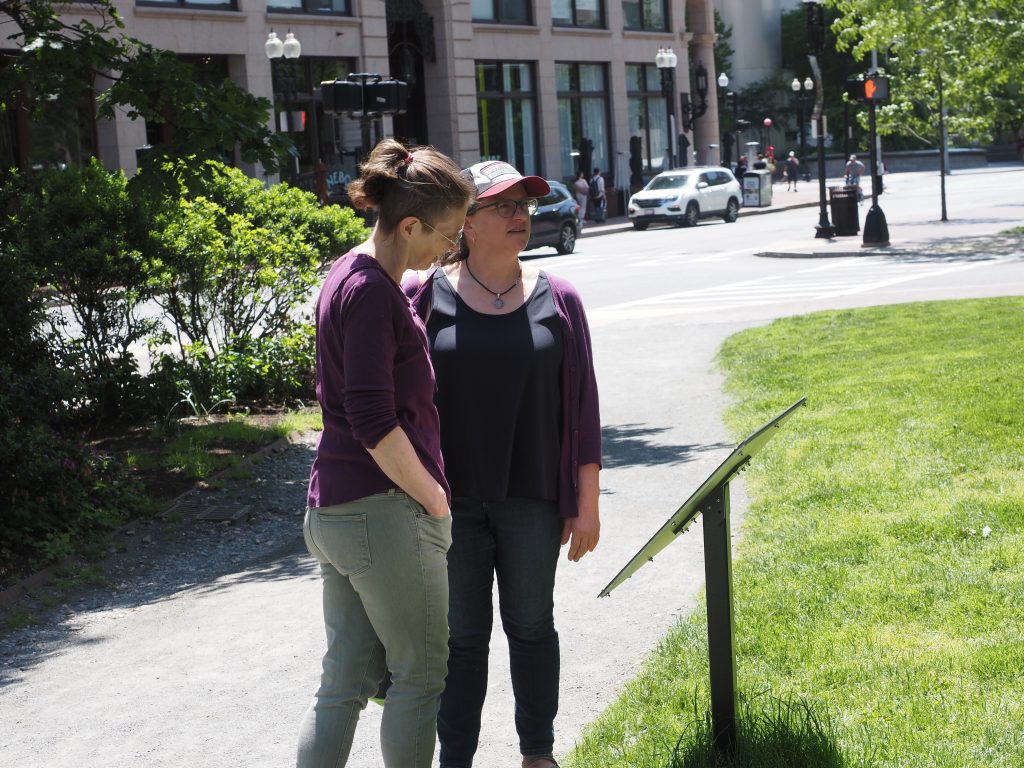
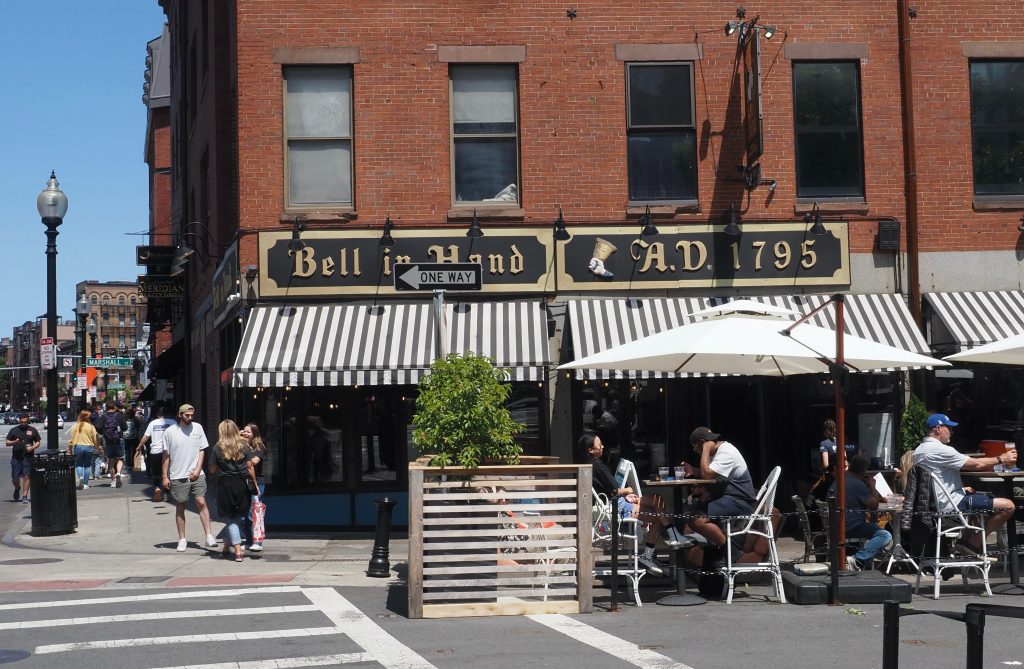
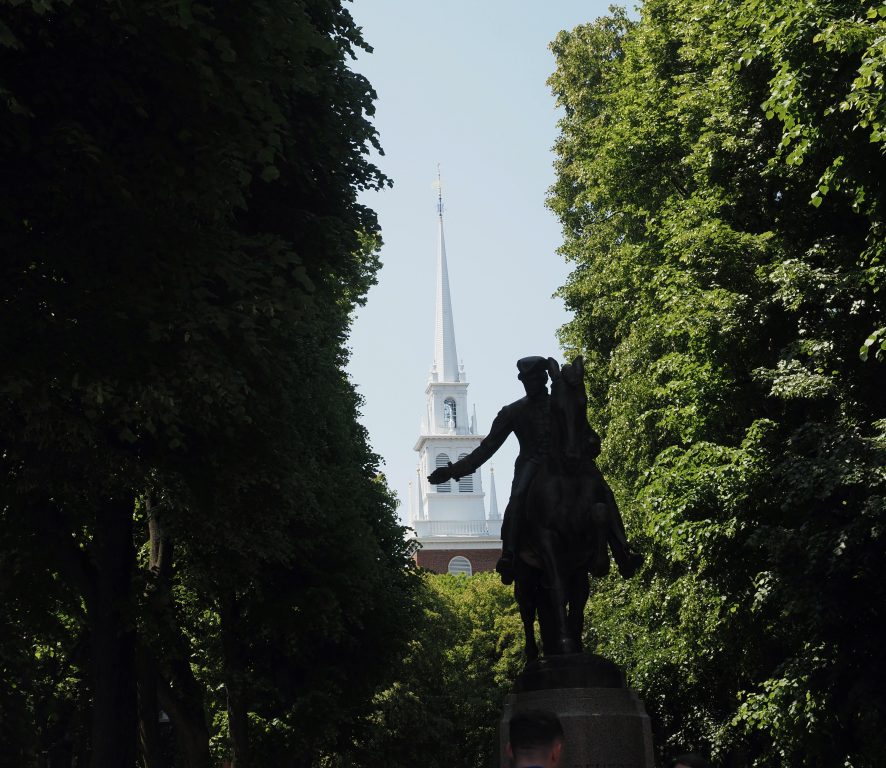
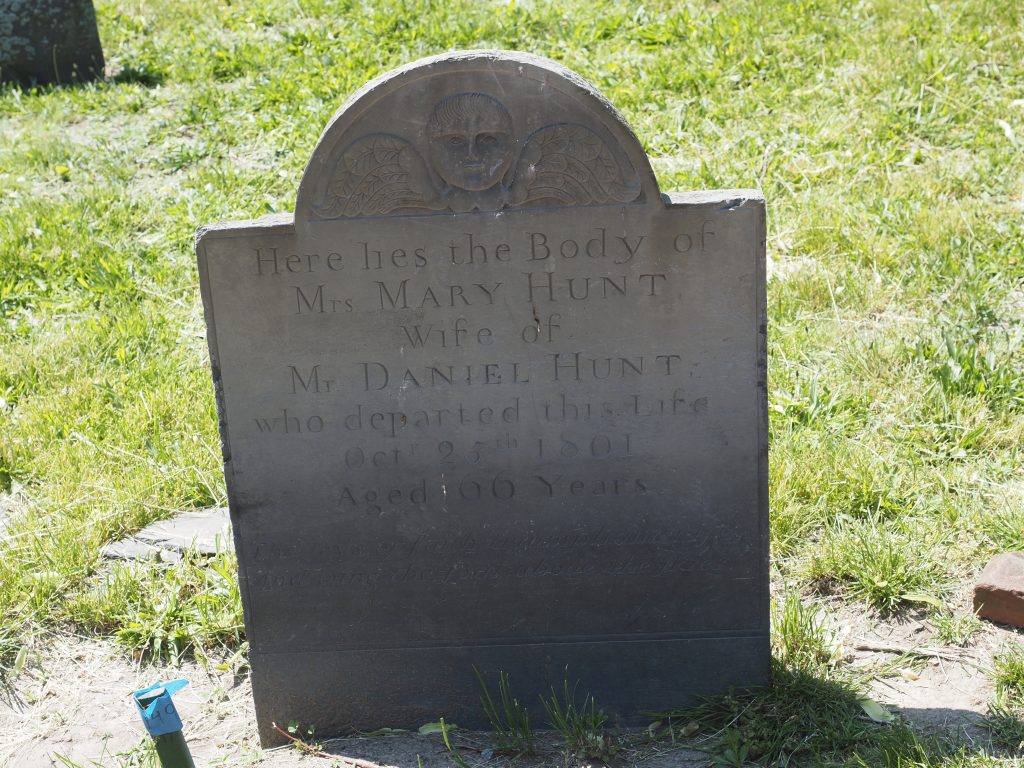
We then went across the harbor over the Charles Bridge to Charlestown, and had a look at the USS Constitution, a three-master frigate from 1797 and the oldest still-commissioned ship of the US Navy (a friendly Navy guide told us that it goes out about 5 times a year, including on July 4, where you can enter a Facebook lottery to be one of the passengers; also, that the ship was last in a battle in the 1850s). We then went back to the east side of the harbor, where the Aquarium is, by ferry, which was of course a complete blast. Then we sat in the little park with some lovely authentic gelato, watched a few more street performers, and made our way back to the area near the Common, where the cemetery near Park Street Church was unfortunately locked up, but we could still get a good look at Benjamin Franklin’s grave, an obelisk where people apparently stack nickels in his honor on a little shelf (Mark discovered this when he enlarged his photo to maximum size). We walked Louise to the parking garage (underneath the Boston Common) and said our goodbyes. It was such a good time!


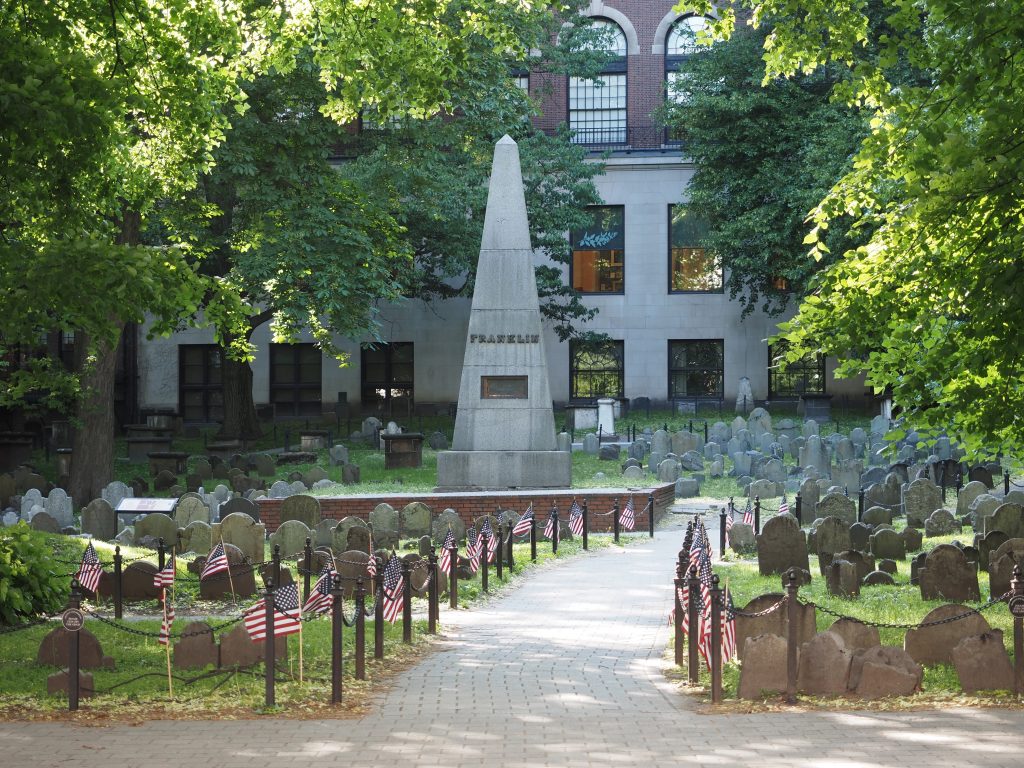
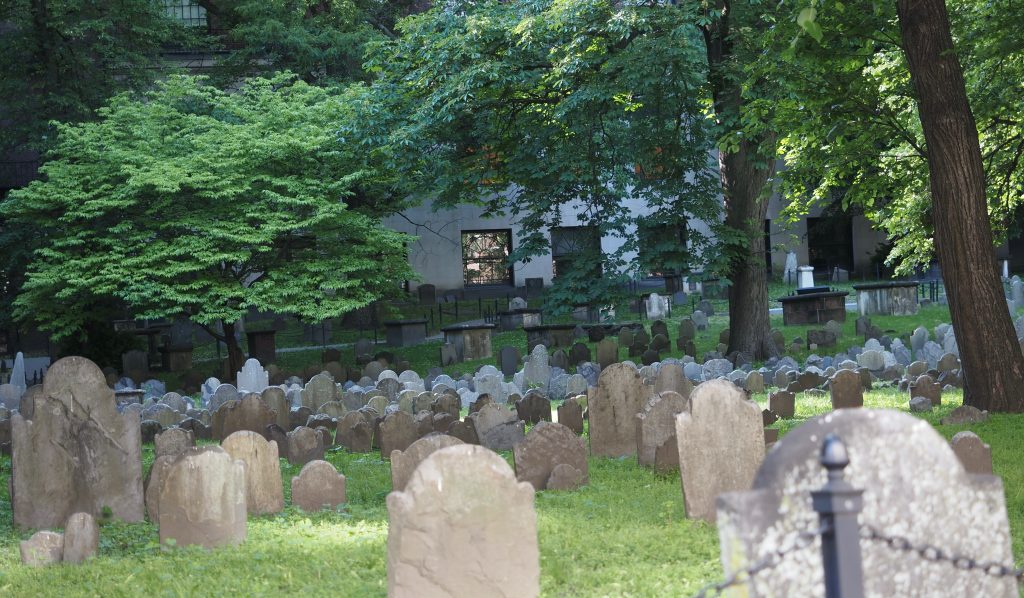
On Louise’s recommendation, we went to the Taiwan Cafe in Chinatown for dinner, and it was truly excellent. We had pork dumplings and chicken on crispy noodles, and then bought some very lovely-looking Chinese bakery desserts and sat in the Common with tea and a tiny custard tart in the sun until the sun disappeared behind Beacon Hill. A great day!
